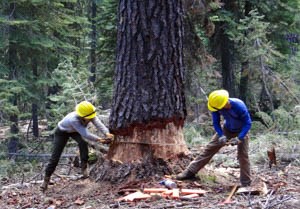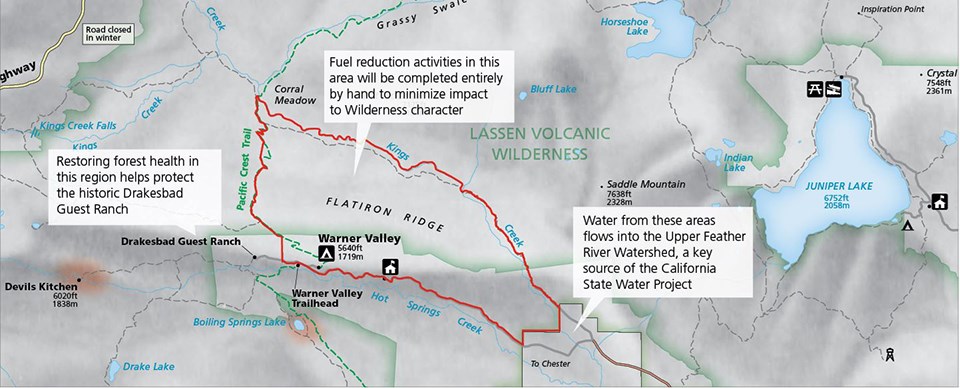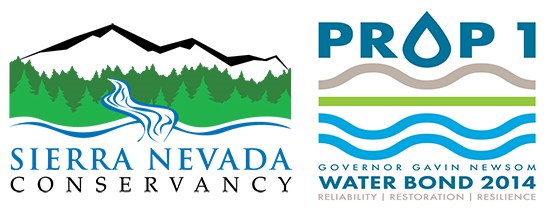

This multi-year project (2019-2024) includes fuels reduction activities across approximately 1,940 acres throughout three projects units in Plumas, Shasta, and Lassen counties. The project units include: Flatiron Unit (1,600 acres), Warner Valley Road/Drakesbad Unit (280 acres), and Juniper Lake Road Unit (800 acres). Sierra Institute Awarded 2019 NPS Wilderness Stewardship AwardSierra Institute's wilderness fuel model received the National Park Service (NPS) Director’s Wes Henry Excellent in Wilderness Stewardship Award, in the External Partner category for 2019. View the park news release or Sierra Institute's award acceptance video on YouTube. Project Goal and ObjectivesThe overall goal of this project is to improve the condition and protection of headwaters of the North Fork Feather River Watershed located within the park. This includes:
2023 ActionsThe Dixie Fire burned the entire project area. It had varying degrees of intensity and severity. This delayed the prescribed fires associated with this project. These prescribed fires are now planned for 2027 to 2030. 2020 ActionsCurrent project efforts are focused on fuels reduction in the Juniper Lake Road unit. This includes work on the 1400-acre Inspiration unit, which extends into Lassen Volcanic Wilderness. A five-person wilderness fuels module staffed by the Sierra Institute is focusing on thinning around Horseshoe Lake cabin and on the Inspiration Point and Snag Lake Trails. Additional crews are completing fuel reduction along the inholder road (east of the Juniper Lake Trailhead). This work is focused on the areas around private property within the park to create a 50-foot buffer outside of property lines and is being completed by an American Conservation Experience (ACE) sawyer crew. 
Sierra Institute, Alex Randoph-Lowe 2019 AccomplishmentsSierra Institute for Community and Environment, based out of nearby Taylorsville, staffed an eight-person wilderness fuels module as part of the North Fork Feather River Headwaters Forest Restoration Project. The young-adult crew rearranged fuels and executed a combination of tree thinning and brush removal along park trails for future fire suppression and prescribed fire operations on Flatiron Ridge above Warner Valley. This included preparation of a 6.7-mile treatment area perimeter using only traditional, non-motorized tools. To accomplish this, the crew underwent training to develop their crosscut saw skills and understanding of how stewardship efforts can contribute to wilderness management and the preservation of wilderness character. Learn more about the crew's use of crosscut saws in two episodes of the park podcast, LAVOCast. 
Flatiron UnitFlatiron is the largest unit in the multi-year North Fork Feather River Headwaters (NFRH) Forest Restoration Project in Lassen Volcanic National Park. The 1,600-acre unit falls largely within designated Wilderness. Manual fuel reduction activities in this area will reduce dense build-ups of fuel to ultimately restore and protect the North Fork Feather River Watershed and improve protection of the historic Drakesbad Guest Ranch. 
Project FundingFunding for this project has been provided by the Sierra Nevada Conservancy, an agency of the State of California, under the Water Quality, Supply, and Infrastructure Improvement Act of 2014 (Proposition 1) grant cycle and in support of the Sierra Nevada Watershed Improvement Program. Minimal Impact Fire ManagementThe North Fork Feather River Headwaters Project emphasizes minimal impact fire management in Wilderness. Nearly three quarters of the park is designated Wilderness and is afforded the highest level of protection for public lands. However, unhealthy forest conditions in Wilderness areas like Flatiron Ridge necessitate some ecological intervention. Focus efforts on areas that connect different fire regimes in order to reduce the need to intervene in other areas of Wilderness. |
Last updated: March 6, 2023
